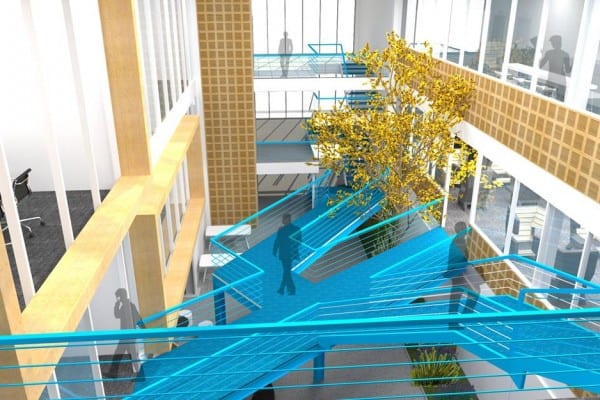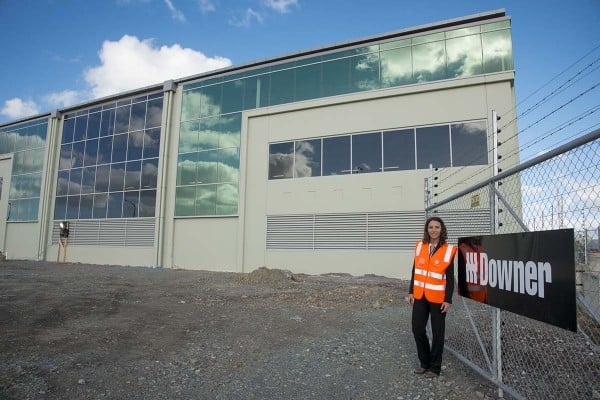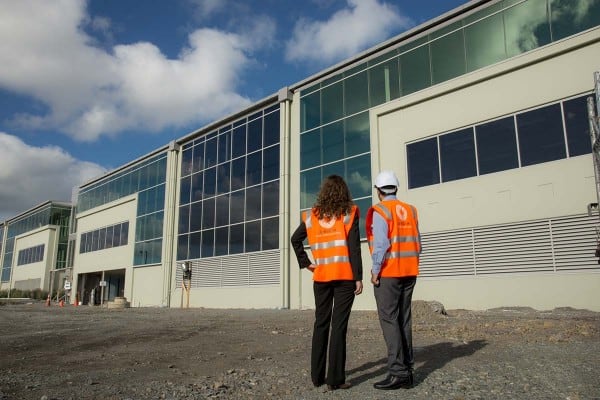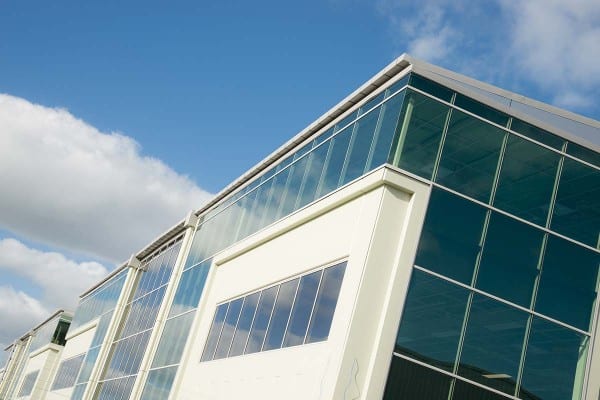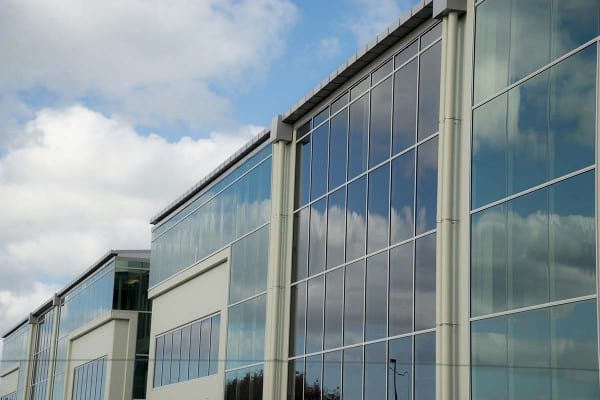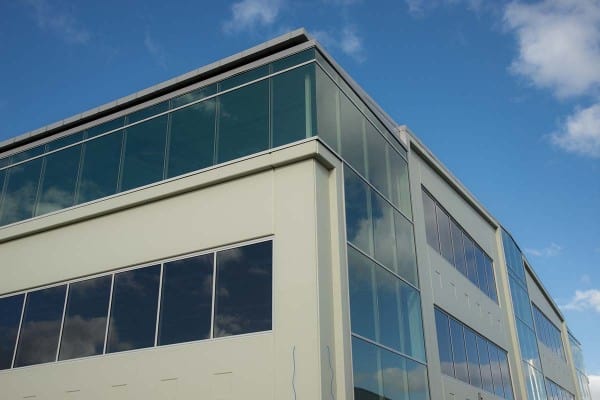We stepped into this project at the end of the design phase for the stage 2 building, because another fire engineering company didn’t have time to finish it. Stage 2 was initially an alternative solution design including acceptable solutions for the office floors and a VM2 design for the car park. We completed the design process and were involved in the discussions with the peer reviewer.
At this point the client decided to add the atrium, which is approximately 8m wide x 37m long x 11m high. Because the offices are open to the atrium, the whole design had to be revised, including some parts of the existing stage 1 building. Significant floor areas are interconnected by the atrium, so compliance could not be demonstrated using a simple acceptable solution design (C/AS). A Verification Method design (C/VM2) had to be carried out.
Having an atrium meant we had to demonstrate that all building occupants could escape safely, rather than just a single floor of occupants. This placed a greater demand on the escape stairs. Also, without a sprinkler system we had to demonstrate there was good visibility through the smoke for the people escaping during the entire escape time.
